As you may already know if you’re reading this page, a SIP provider offers a SIP trunking solution, which connects to a Private Branch Exchange (PBX) on the one hand, and to the internet and the Public Switched Telephone Network (PSTN) on the other hand. A SIP trunk is a bundle of virtual telephone lines whose calls are managed using the Session Initiation Protocol (SIP), and whose voice data is sent as digital packets over the internet, for some or all of the call’s route.
Key Takeaways
- Integrating SIP trunking with a PBX system modernizes business telephony without needing to replace existing infrastructure.
- This hybrid setup delivers major benefits, cost savings, disaster recovery, scalability, and access to modern VoIP features like auto-attendants and voicemail-to-email.
- Successful integration requires SIP-compatible PBX hardware/software, a reliable SIP provider, optimized QoS settings, and strong security practices including encryption and IP whitelisting.
What Is PBX?
A PBX system acts as an internal call management hub, directing inbound and outbound calls for an organization. It allows multiple employees to share external phone lines efficiently while managing voicemail, extensions, and call routing.
Types of PBX Systems
| PBX Type | Description | Best For |
| Traditional PBX | Uses analog phone lines (PSTN) with physical hardware | Businesses with existing landline infrastructure |
| IP PBX | Runs on VoIP (Voice over Internet Protocol), allowing digital communication | Companies looking to transition from PSTN to VoIP |
| Hosted PBX (Cloud PBX) | A virtual, cloud-managed PBX system | Businesses wanting a scalable, maintenance-free solution |
While traditional PBX relies on physical lines, modern IP PBX systems work with VoIP and SIP trunking to create a flexible, cost-efficient phone network.
What Is SIP Trunking?
SIP trunking (Session Initiation Protocol trunking) replaces traditional telephone lines with VoIP-based connectivity. Instead of using physical trunk lines, a SIP trunk connects a business’s PBX system to the internet, enabling high-quality voice calls, video conferencing, and unified communications.
Key Advantages of SIP Trunking
| Advantage | Description |
| Cost Savings | Eliminates expensive physical lines and reduces call costs |
| Scalability | Easily adds or removes channels without hardware changes |
| Global Reach | Connects international teams and offices via internet-based calling |
| Disaster Recovery | Reroutes calls automatically in case of outages |
| Advanced Telephony Features | Includes call forwarding, voicemail-to-email, auto-attendant |
Businesses already using a PBX system can enhance functionality and cut costs by integrating SIP trunks.
How a PBX and a SIP Provider Work Together
The two types of products PBX and SIP provider – must work hand-in-glove to provide a seamless Unified Communications solution. You may be considering acquiring the two products, or you may already have a PBX and are shopping around for a SIP trunking provider. In both cases, it’s helpful to understand how the two systems work together.
Integrating PBX with SIP Trunking: Why It’s a Smart Move
Rather than replacing an existing PBX system, many companies choose to enhance their PBX with SIP trunking. This hybrid approach allows businesses to:
- Retain control over internal call management
- Reduce costs by eliminating expensive legacy phone lines
- Expand globally without installing physical infrastructure
- Improve disaster recovery with failover routing options
By merging PBX and SIP trunking, companies gain a flexible, future-proof communication system.
Key Benefits of a PBX + SIP Trunking Integration
1. Significant Cost Savings
Businesses can cut monthly telecom expenses by switching from PSTN-based PBX lines to SIP trunks. With SIP:
- Local and international calls become significantly cheaper.
- Long-distance fees are minimized or eliminated.
- Hardware maintenance costs for old PBX lines are reduced.
A case study from a mid-sized IT firm showed a 50% reduction in communication costs after replacing traditional PBX lines with SIP trunks.
2. Business Continuity & Disaster Recovery
Traditional phone systems are vulnerable to outages, but SIP trunking improves reliability by:
- Automatically rerouting calls during network failures.
- Allowing employees to use softphones or mobile apps as backups.
- Providing cloud redundancy, ensuring calls continue even if on-premise PBX systems go offline.
3. Scalability Without Infrastructure Upgrades
Expanding traditional PBX requires installing new lines, which is costly and time-consuming.
With SIP trunking, businesses can:
- Add or remove SIP trunks in minutes, without physical modifications.
- Expand globally, connecting new offices without setting up new hardware.
A growing e-commerce business used SIP trunking to scale from 10 to 100 phone lines in a matter of days, something traditional PBX could not achieve.
4. Unified Communications & Enhanced Features
Merging PBX with SIP trunking enables access to advanced VoIP features, including:
- Auto-attendant (virtual receptionist)
- Call forwarding and call routing
- Voicemail-to-email transcription
- Conference calling with video support
- CRM integration for customer service teams
This creates a modern, feature-rich telephony system while still using an existing PBX setup.
How to Successfully Implement SIP Trunking with PBX
Step 1: Evaluate Your Existing PBX System
Determine whether your PBX supports SIP connectivity or if a VoIP gateway is needed.
Step 2: Choose a SIP Provider That Matches Your Needs
Look for a provider offering:
- Reliable call quality with minimal latency
- Flexible pricing plans to match business size
- Global SIP trunking services for multi-location businesses
Step 3: Configure Your SIP Trunks
- Connect the SIP trunks to the PBX system.
- Adjust firewall settings to allow VoIP traffic.
- Optimize QoS (Quality of Service) on your network to prioritize SIP calls.
Step 4: Test Call Quality and Redundancy
- Make test calls to check audio clarity.
- Simulate outages to verify failover routing.
- Monitor bandwidth usage to ensure smooth operations.
Step 5: Scale as Needed
With SIP trunking, businesses can increase call capacity in minutes. This allows organizations to grow without expensive infrastructure changes.
Security Considerations for SIP Trunking and PBX Integration
1. Protect Against SIP-Based Attacks
To prevent unauthorized access, use:
- SIP authentication and encryption
- IP whitelisting to block unknown sources
- Regular network security audits
2. Ensure Call Quality with QoS Settings
A dedicated VoIP network segment and prioritized SIP traffic prevent:
- Dropped calls
- Latency issues
- Audio disruptions
3. Use Multi-Layer Redundancy
To ensure uninterrupted communication, businesses should:
- Implement failover SIP trunks.
- Use multiple internet providers for backup.
3CX and DID Logic: Instant Integration for a Proven Solution
Given their complementary roles in managing business Voice-over-IP (VoIP) communications, it makes sense that PBX providers and SIP trunking providers cooperate, test out their integration and make it as painless as possible for their mutual customers. DID Logic has done just that with 3CX, a provider of a virtual (software-only) PBX solution for Windows and Linux, for on-premise or in-the-cloud installation.
3CX has designed a suite of certification tests that SIP solutions must undergo in order to verify integrability with their PBX software. DID Logic is a 3CX-certified solution, which means that the functionality and quality of the combined 3CX/DID Logic solution has been proven and is recommended to customers. Best of all, when deploying a 3CX solution, integrating with DID Logic is simply a matter of choosing DID Logic from a pre-defined menu of supported providers. The 3CX configuration wizard then automatically fills in other fields required for the integration, such as authentication credentials.
If you’re an existing or potential customer of 3CX, completing your VoIP infrastructure with DID Logic’s solution increases your cost savings and guarantees a solution with proven reliability and turnkey integration.
Final Thoughts: Is a PBX + SIP Trunking Integration Right for You?
Integrating PBX with SIP trunking is a smart move for businesses looking to modernize communication without discarding existing infrastructure.
| Business Type | Recommended Solution |
| Companies with a traditional PBX wanting to reduce costs | SIP trunking integration |
| Growing businesses needing flexibility | Hosted PBX with SIP trunks |
| Enterprises with remote teams | Cloud PBX with global SIP connectivity |
By combining PBX and SIP trunking, organizations can create a cost-efficient, scalable, and feature-rich telephony system that supports modern business communications.
Related Articles:
- SIP vs VoIP
- PRI vs SIP
- IP Trunking vs SIP Trunk
- SIP Trunking vs Cloud PBX
- SIP Session vs SIP Trunk
- SIP Line vs SIP Trunk










